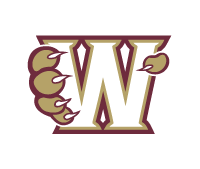CONCUSSIONS
The occurrence of a head injury or a concussion in a student-athlete is taken seriously by the Athletic Department, Athletic Training Staff, and Coaching Staff at Whitney High School. It is imperative that all parents/guardians of young athletes be informed about this type of injury, the potential consequences, and the procedures in place to protect the student-athletes. The following concussion information is provided for the parents/guardians and the student-athletes. You are receiving this information sheet about concussions because of California state law AB 25, now Education Code § 49475: The law requires a student-athlete who may have a concussion during a practice or game to be removed from the activity for the remainder of the day. Any athlete removed for this reason must complete the Return To Play Concussion Protocol outlined by the California Interscholastic Federation (CIF) before returning to full participation. Any student-athlete removed for this reason must receive a written note from a medical doctor trained in the management of concussion before returning to practice.
What is a concussion and how do I know if I have one?
A concussion is a kind of brain injury. It can be caused by a bump or hit to the head, or by a blow to another part of the body with the force that shakes the head. Concussions can appear in any sport, and can look differently in each person. Most concussions get better with rest and over 90% of athletes fully recover. However, all concussions should be considered serious. If not recognized and managed the right way, they may result in problems including brain damage and even death. Most concussions occur without being knocked out. Signs and symptoms of concussion may show up right after the injury or can take hours to appear. If your child reports any symptoms of concussion or if you notice some symptoms and signs, seek medical evaluation from your team’s athletic trainer and a physician trained in the evaluation and management of concussion. If your child is vomiting, has a severe headache, or is having difficulty staying awake or answering simple questions, call 911 for immediate transport to the emergency department of your local hospital. Other possible signs of a concussion include, but are not limited to: appearing dazed or disoriented, demonstrating short term memory difficulty, exhibiting difficulty with balance or coordination, and answering questions slowly or inaccurately.
What can happen if my child keeps playing with concussion symptoms or returns too soon after
getting a concussion?
Athletes with the signs and symptoms of concussion should be removed from play immediately. There is NO same day return to play for a student-athlete with a suspected concussion. Youth athletes may take more time to recover from concussion and are more prone to longterm serious problems from a concussion. Even though a traditional brain scan (e.g., MRI or CT) may be “normal”, the brain has still been injured. Animal and human research studies show that a second blow before the brain has recovered can result in serious damage to the brain. If your athlete suffers another concussion before completely recovering from the first one, this can lead to prolonged recovery (weeks to months), or even to severe brain swelling (Second Impact Syndrome) with devastating consequences. There is an increasing concern that head impact exposure and recurrent concussions may contribute to long-term neurological problems. One goal of concussion education is to prevent a too early return to play so that serious brain damage can be prevented.
What is Return to Learn?
Following a concussion, students may have difficulties with short- and longterm memory, concentration and organization. They will require rest while recovering from injury (e.g., avoid or limit reading, texting, video games, loud movies), or may even need to limit school attendance for a few days. As they return to school, the schedule might need to start with a few classes or a halfday. If recovery from a concussion is taking longer than expected, they may also benefit from a reduced class schedule and/or limited homework; a formal school assessment may also be necessary. Your school or physician can help suggest and make these changes.
How is Return to Play (RTP) determined?
Concussion symptoms should be completely gone before returning to competition. A RTP progression is a gradual, step-wise increase in physical effort, sports specific activities and then finally unrestricted activities. If symptoms occur with activity, the progression should be stopped. If there are no symptoms the next day, exercise can be restarted at the previous stage. RTP after concussion should occur only with medical clearance from a physician trained in the evaluation and management of concussions, and a step-wise progression program monitored by an athletic trainer, coach, or other identified school administrator. AB 2127, a California state law effective 1/1/15, states that return to play (i.e., full competition) must be no sooner than 7 days after the concussion diagnosis has been made by a physician.
CIF Concussion Symptom Checksheet
